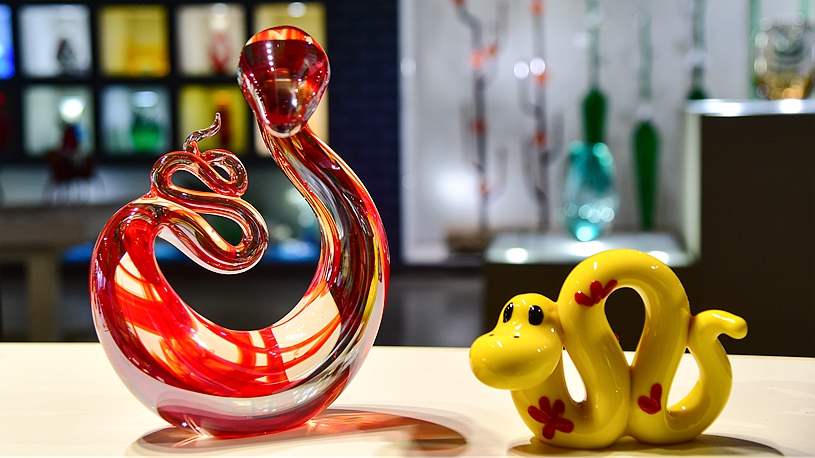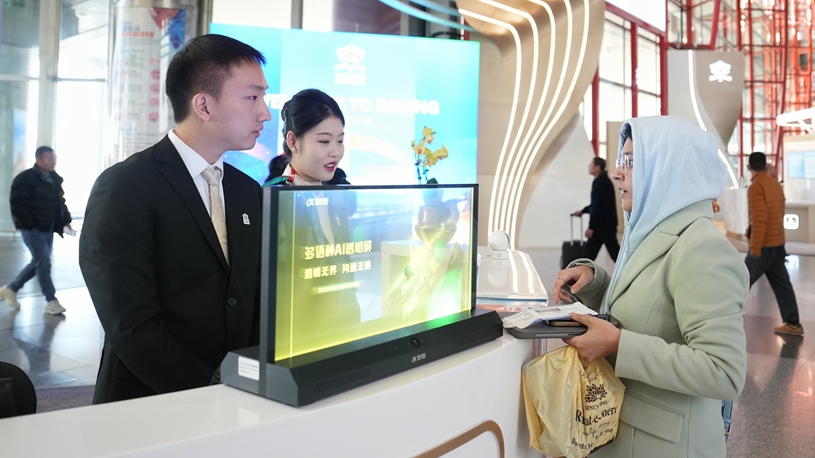Chinese display technologies have claimed center stage both at CES and in the global market in recent years.
LAS VEGAS, the United States, Jan. 9 (Xinhua) -- At Hisense's booth in the 2025 Consumer Electronics Show (CES), a large TV drew attention as it displayed Black Myth: Wukong, an action game known for its demanding performance needs. Visitors paused to watch the game's fluid motion and crisp visuals.
Joshua Liccardi, a gamer from the U.S. state of Massachusetts, was impressed by the gaming experience after playing for about 10 minutes.
"It's nice to be on the big screen. The frame rate is pretty good. It looks smooth," said Liccardi, who typically plays on computer monitors.
"I'll probably look for something like this," he added. "If you're playing PlayStation while sitting on the couch, then bigger is definitely better."
This sentiment was echoed by Dennys Li, president of Hisense Visual Technology. "When it comes to displays, consumers always prefer bigger screens," he told Xinhua during the ongoing CES 2025 in Las Vegas.
At the world's annual largest consumer electronics show, Hisense launched a 116-inch RGB-Mini LED TV, what is billed as the world's largest Mini LED TV. Core technology is an artificial intelligence (AI) image processing chip that is independently designed and developed by Hisense, according to the company.
This innovation addresses issues like LED lifespan, color purity, and brightness, Li said. He also emphasized the sustainability aspects.
"As the industry moves toward larger screen sizes, energy consumption becomes a greater concern -- larger screens naturally consume more power without improved efficiency," he said.
"Our technology reduces energy consumption by over 20 percent compared to traditional LCD technology, aligning with industry development trends," he said.
Hisense also unveiled its first consumer-ready MicroLED display at the event, which is designed to meet growing demand for larger, more immersive screens while ensuring durability and long-term performance.
At CES, other innovative display products from China drew crowds as well, including gaming monitors, in-car displays, smart projectors, and augmented reality (AR) glasses.
Rob Rast, a digital content creator from California, was particularly drawn to a racing simulator featuring TCL's QD-Mini LED gaming monitor.
"It's really cool. It was fun to play and challenging to drive," said Rast, noting that the curved screen made the experience more realistic -- "like driving a real car."
TCL, another Chinese leading TV manufacturer, showcased its QD-Mini LED TV as its flagship product, designed for immersive viewing experiences. The company's exhibit also included full-color electronic paper display technology and smart glasses with built-in computing power.
At the booth of BOE, a leading Chinese display panel manufacturer, the smart cockpit technologies garnered significant attention.
Their exhibit included glasses-free 3D displays, wooden displays that blend with car interiors when inactive, and switchable privacy displays that can alternate between public and private viewing modes -- particularly useful for in-car entertainment where passengers can watch content without distracting the driver.
Electronic displays have become integral to the economy, serving as the primary visual and tactile interface across various consumer electronics, from televisions and computers to mobile devices, vehicles, medical equipment, and household appliances.
Chinese display technologies have claimed center stage both at CES and in the global market in recent years. The country currently leads with 70 percent of the world's total display capacity, projected to reach 74 percent by 2028, according to estimates of the research company Display Supply Chain Consultants.
In the LCD sector specifically, China is expected to take up 76 percent of the global market by 2028. The country is also poised to overtake South Korea in OLED capacity by 2028.
Industry analysts noted that Chinese companies had evolved beyond being the largest global producers to become leading innovators in display technologies.
"China now stands at the center stage of the global display industry and cannot be ignored," Li said. "We will continue to move toward the center, and display technology must continue to break through with innovation." ■












